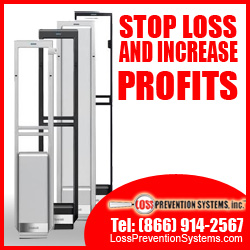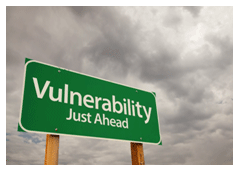
How does Notre Dame’s football team manage to maintain a top program year in and year out? Is it the Luck of the Irish that does it? No, they field a competitive team by working hard and preparing for the upcoming season. As we enter March we think of spring and St. Patrick’s Day and the Luck of the Irish and lucky four-leaf clovers and all of these things. In retail, we also think about store inventory time and how the results will come out this year.
If you are counting on the Luck of the Irish or just plain luck to get you through inventory and wind up with successful results you need to get a better plan. Obtaining inventory results that reflect a healthy, robust business starts well before the inventory date. While it may include the preparation time several weeks in advance of the actual day/night of inventory counting the real work begins when you start your shortage action plan.
If this is the first inventory for your store you will not have a measurement or prior inventory as a baseline for what you will be up against. I would suggest that in your case you measure your store against the national shortage average OR you measure it against the national shortage average for your type of retail business. According to the National Retail Federation 2018 National Retail Security Survey, shoplifting accounted for 35.7% of losses while employee theft accounted for 33.2%. Loss Prevention Systems, Inc. personnel are well-versed in shortage and can be a helpful consultant to you in this area. For those who have inventoried previously you want to lower whatever the prior year shortage results were for your store. Obviously it would be fantastic if zero shortage could be counted on year in and year out but the fact of the matter is very few stores will come in at zero (I have seen overages but those always offset the next year due to poor counts or paperwork errors).
So where does one start in their planning? First you have to look at your anti-theft strategies. With nearly 70% of the shortage attributable to theft you can take care of a big chunk of shortage by addressing this issue. Is your store using electronic article surveillance equipment to deter and prevent shoplifting and even employee theft? If you do not have an electronic article surveillance system in your first assignment is to get one. This includes the towers, tags, and even integrated cameras. Don’t use second-hand equipment or an off-brand system in your store. Using a name brand solution from Sensormatic is the best option and it is more affordable than you may think. Again, Loss Prevention Systems, Inc. can guide you into the best solution for your business no matter how big or small it may be.
You then need to take a look at the other areas that impact shortage, operations, vendor shortage and a small portion which is undefined. Looking at each of these aspects can be time-consuming because there is so much that can impact each one. If you have managers working for you they should be looking at how shortage could be happening in their departments and present solutions to address them. That information then goes into a master shortage plan. If you are lucky you will have a team that knows where to look for shortage opportunities. If you don’t have that kind of luck or if you are the only manager for your store you are still lucky. Loss Prevention Systems, Inc. can work with you to conduct a risk assessment and identify vulnerabilities and devise plans.
Finally, once your anti-theft system is up and running and your shortage action plans have been created you can spend the month prior to inventory prepping the store. There’s no magic to it, it is a detailed preparation to make sure every piece of merchandise is properly tagged and ready to be counted. Inspections of nooks, crannies, shelves, underneath base decks, on top of fixtures and in supply closets to locate items that have migrated where they should not have can add dollars back to your inventory.
Four leaf clovers, lucky charms, wishful thinking nor luck of the Irish are going to get you a successful inventory. Theft prevention, careful planning and advice from people who have been in the Loss Prevention field WILL result in successful inventories. Follow this advice and find your own pot of gold at the end of the inventory rainbow.
 It’s 2019 and time to make some New Year’s resolutions! We all know how easy a resolution can be to make but they are hard to keep. We also know that it is just as easy to break a resolution but are there resolutions a store owner can make that would benefit the store AND benefit society? I think one resolution that would be mutually beneficial for both would be the implementation of environment-friendly policies and procedures. We are talking about sensible measures that would appeal to anyone on either side of the political spectrum. Right now there is a big push for the elimination of plastic shopping bags. There are also those opposed to going back to paper bags. What could the solution be? Try encouraging the use of recyclable, reusable shopping bags for your customers. You make those opposed to one-time use bags happy and you save money on the need to regularly purchase more shopping bags (which can be a rather pricey supply on your monthly expense report). To implement this type of change you would want to have reusable bags ready for your customers and you might even give them away for the first few weeks you start the program. After that, you might give customers a small discount to customers who bring their own bags, say 1% on every transaction.
It’s 2019 and time to make some New Year’s resolutions! We all know how easy a resolution can be to make but they are hard to keep. We also know that it is just as easy to break a resolution but are there resolutions a store owner can make that would benefit the store AND benefit society? I think one resolution that would be mutually beneficial for both would be the implementation of environment-friendly policies and procedures. We are talking about sensible measures that would appeal to anyone on either side of the political spectrum. Right now there is a big push for the elimination of plastic shopping bags. There are also those opposed to going back to paper bags. What could the solution be? Try encouraging the use of recyclable, reusable shopping bags for your customers. You make those opposed to one-time use bags happy and you save money on the need to regularly purchase more shopping bags (which can be a rather pricey supply on your monthly expense report). To implement this type of change you would want to have reusable bags ready for your customers and you might even give them away for the first few weeks you start the program. After that, you might give customers a small discount to customers who bring their own bags, say 1% on every transaction. Black Friday and the holiday shopping weekend has generally been the time of the year that most retailers are excited about. This is the time when shoppers are going to pull out their wallets and spend money. Deep discounts, doorbusters, even gift bags for the first customers, have been used to entice shoppers to visit stores early. It has been so successful as a marketing tool that stores have even advertised early Black Friday sales in JULY! Unfortunately, it seems that there has been a dark cloud overshadowing this weekend and it is more ominous each year. This cloud is one that can turn a Black Friday into a Bleak Friday if a store owner isn’t prepared for it.
Black Friday and the holiday shopping weekend has generally been the time of the year that most retailers are excited about. This is the time when shoppers are going to pull out their wallets and spend money. Deep discounts, doorbusters, even gift bags for the first customers, have been used to entice shoppers to visit stores early. It has been so successful as a marketing tool that stores have even advertised early Black Friday sales in JULY! Unfortunately, it seems that there has been a dark cloud overshadowing this weekend and it is more ominous each year. This cloud is one that can turn a Black Friday into a Bleak Friday if a store owner isn’t prepared for it. NO! not yet. Before we begin patting ourselves on the back you must remember that your Sensormatic System is only part of your shoplifting solution. Your Sensormatic System will protect your merchandise however, many shoplifters are determined and will try to steal anyway. The Sensormatic System itself is a deterrent. Its mere presence will dissuade many shoplifters.
NO! not yet. Before we begin patting ourselves on the back you must remember that your Sensormatic System is only part of your shoplifting solution. Your Sensormatic System will protect your merchandise however, many shoplifters are determined and will try to steal anyway. The Sensormatic System itself is a deterrent. Its mere presence will dissuade many shoplifters.
 Maybe you have seen it before and never gave it much thought, you walked by a cash register and saw a gift card lying next to it. A customer probably just changed their mind, right? Perhaps you saw your salesfloor person wearing a heavy jacket while working but you just attributed it to them being cold all the time. You may notice cash shortages periodically but they are under $10 and some people get busy and make little mistakes, it happens. Then there is the cashier that seems to be really interested in the store and always reports suspicious people he sees. He even asks managers if there might be security camera footage that could be reviewed to see the “suspect” in case they return. There is the saleswoman who finds a lot of empty packages on the floor and reports them to the manager and where she found them so managers would know about theft taking place in the store. These each seem like harmless issues on the surface but could there be something more nefarious going on under your nose? Is something starting to seem a bit curious after all? If you are suspecting something dishonest may be going on in your store what is your next step?
Maybe you have seen it before and never gave it much thought, you walked by a cash register and saw a gift card lying next to it. A customer probably just changed their mind, right? Perhaps you saw your salesfloor person wearing a heavy jacket while working but you just attributed it to them being cold all the time. You may notice cash shortages periodically but they are under $10 and some people get busy and make little mistakes, it happens. Then there is the cashier that seems to be really interested in the store and always reports suspicious people he sees. He even asks managers if there might be security camera footage that could be reviewed to see the “suspect” in case they return. There is the saleswoman who finds a lot of empty packages on the floor and reports them to the manager and where she found them so managers would know about theft taking place in the store. These each seem like harmless issues on the surface but could there be something more nefarious going on under your nose? Is something starting to seem a bit curious after all? If you are suspecting something dishonest may be going on in your store what is your next step? You think that you may be scoring a great deal on cheap, knock-off Electronic Article Surveillance (EAS) hard tags and labels, however, over time you find that you are missing shoplifters due to poor pick rates or hard tags that are easy to defeat. Why? To make real, quality EAS hard tags and labels it takes more effort and time. The materials and sophistication of the circuit is not something that can be easily done by a slave laborer in some dark factory in a third world nation. The labels we sell are all high-quality EAS labels and tags that are both Sensormatic and Checkpoint Systems compatible.
You think that you may be scoring a great deal on cheap, knock-off Electronic Article Surveillance (EAS) hard tags and labels, however, over time you find that you are missing shoplifters due to poor pick rates or hard tags that are easy to defeat. Why? To make real, quality EAS hard tags and labels it takes more effort and time. The materials and sophistication of the circuit is not something that can be easily done by a slave laborer in some dark factory in a third world nation. The labels we sell are all high-quality EAS labels and tags that are both Sensormatic and Checkpoint Systems compatible. How many times have you caught yourself in a conversation with another manager or a supervisor discussing a seasonal merchandise question or an inventory preparation question and found yourself saying, “I think we did it this way” or “ It seems to me customers were buying such and such last year”? It can be frustrating, especially when the discussion may influence whether an item should be carried or if it was carried the prior year was it a flop? The same thing happens with inventory. Did we start prepping 5 days out? No? Maybe it was 3 days out. Having checklists can make these conversations fewer in number and improve productivity as well as sales performance.
How many times have you caught yourself in a conversation with another manager or a supervisor discussing a seasonal merchandise question or an inventory preparation question and found yourself saying, “I think we did it this way” or “ It seems to me customers were buying such and such last year”? It can be frustrating, especially when the discussion may influence whether an item should be carried or if it was carried the prior year was it a flop? The same thing happens with inventory. Did we start prepping 5 days out? No? Maybe it was 3 days out. Having checklists can make these conversations fewer in number and improve productivity as well as sales performance.
 Loss Prevention Managers and Associates use audits on a regular basis to keep track of merchandise that may be potentially high theft items. The items may be high dollar such as iPods, laptops, computer tablets and so on. The products being audited may simply be easy to steal and resell. Such items can include a variety of products ranging from drill bits to medicines, razor blades and even fragrances. Audits are an effective tool for Loss Prevention departments to quickly identify theft trends and to begin investigating when and how losses are taking place. For stores that cannot afford a Loss Prevention department, it falls upon store owners and managers to investigate missing merchandise. The question then becomes, how does a management team decide what items should be audited or when audits should take place?
Loss Prevention Managers and Associates use audits on a regular basis to keep track of merchandise that may be potentially high theft items. The items may be high dollar such as iPods, laptops, computer tablets and so on. The products being audited may simply be easy to steal and resell. Such items can include a variety of products ranging from drill bits to medicines, razor blades and even fragrances. Audits are an effective tool for Loss Prevention departments to quickly identify theft trends and to begin investigating when and how losses are taking place. For stores that cannot afford a Loss Prevention department, it falls upon store owners and managers to investigate missing merchandise. The question then becomes, how does a management team decide what items should be audited or when audits should take place?  Reviewing your store policies today and training your employees about the ramification of not following them properly is imperative. The consequences of not following those policies properly are too costly to postpone. Employees, as they are human, try to use shortcuts or in some instances, take the easy way out while doing some chores without thinking it may affect the bottom line at the end of the day. Profits for a store cannot be thought of as profits for the owner only, employment and benefits for the employees are inherently tied to those of the owner. If the owner must close the store for loses, the employees lose as well.
Reviewing your store policies today and training your employees about the ramification of not following them properly is imperative. The consequences of not following those policies properly are too costly to postpone. Employees, as they are human, try to use shortcuts or in some instances, take the easy way out while doing some chores without thinking it may affect the bottom line at the end of the day. Profits for a store cannot be thought of as profits for the owner only, employment and benefits for the employees are inherently tied to those of the owner. If the owner must close the store for loses, the employees lose as well.